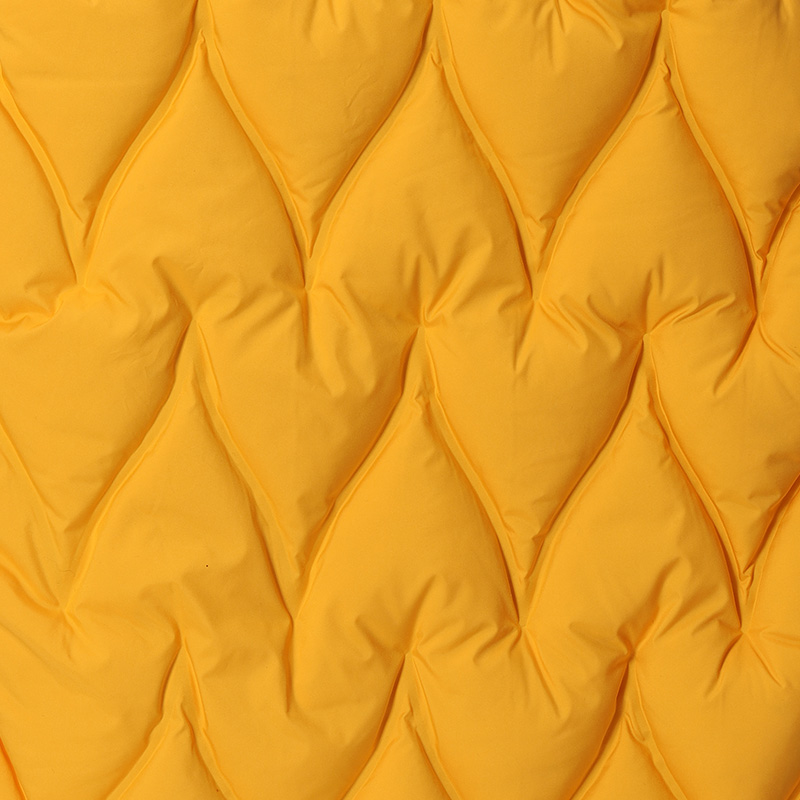3D channel down sports jacket fabrics are revolutionizing the way we think about insulation, durability, and style. These innovative textiles are not just about looking good—they’re engineered to withstand the harshest conditions while keeping you warm, dry, and comfortable. But how do manufacturers ensure these fabrics live up to their promises? Let’s dive into the world of functional performance testing and uncover what makes these materials so remarkable.
One of the most critical aspects of evaluating 3D channel down jacket fabrics is understanding their down-proofing mechanisms. Feather leakage can ruin the experience of wearing a premium down jacket, which is why rigorous testing methods like the Frazier Air Permeability Test are employed. This test measures how much air passes through the fabric under controlled conditions, giving manufacturers insight into its ability to trap feathers effectively. The tighter the weave and the higher the density of the material, the better it performs in preventing feather escape. For instance, polyester pongee variants with intricate honeycomb or ripstop patterns often excel in this regard, thanks to their unique microstructural properties. By fine-tuning these characteristics, designers can create garments that not only look sleek but also maintain their integrity over time.
But down-proofing is just one piece of the puzzle. Another key feature of these advanced fabrics is their waterproof rating, determined by hydrostatic head measurements. Imagine standing in a torrential downpour—how well does your jacket shield you from the rain? For 3D channel fabrics, achieving an optimal balance between water resistance and breathability is crucial. A hydrostatic head measurement of at least 10,000mm is considered excellent for outdoor gear, ensuring the fabric can handle heavy rainfall without compromising comfort. To enhance these properties further, many manufacturers integrate hydrophobic coatings or laminated membranes into the fabric layers. These innovations allow moisture vapor to escape while blocking liquid water, making them ideal for athletes and adventurers alike who need reliable protection against unpredictable weather.
Beyond technical metrics, there’s also the question of real-world application. How do these fabrics perform when subjected to extreme environmental conditions? Whether it’s sub-zero temperatures on a mountaineering expedition or humid climates during a winter hike, the multi-layered construction of 3D channel down sports jacket fabrics plays a pivotal role. For example, three-layer laminations provide a solid foundation for everyday use, while five-layer systems offer enhanced thermal insulation and durability for more demanding scenarios. This adaptability makes them suitable for a wide range of products, from men’s and women’s jackets to children’s autumn and winter wear. Moreover, advancements in bonding techniques ensure that these layers remain intact even after repeated washing or prolonged exposure to harsh elements.

Of course, no discussion about performance would be complete without addressing sustainability. As consumers become increasingly eco-conscious, the demand for responsibly sourced materials continues to grow. Many modern versions of these fabrics now incorporate recycled polyester, reducing reliance on virgin resources without sacrificing quality. Certifications like GRS (Global Recycled Standard) and OEKO-TEX serve as markers of trust, assuring buyers that the product aligns with ethical manufacturing practices. Even biodegradable coatings are starting to emerge, offering a glimpse into a future where high-performance textiles coexist harmoniously with the planet.
So, whether you’re a designer crafting the next big trend in activewear or a consumer searching for the perfect blend of form and function, 3D channel down sports jacket fabrics represent the pinnacle of innovation in textile engineering. With their unparalleled combination of down-proofing, waterproofing, and thermal efficiency, they set a new standard for what’s possible in outerwear. And as technology continues to evolve, we can expect even more exciting developments in this space—pushing boundaries and redefining comfort for generations to come.


 English
English CN
CN













